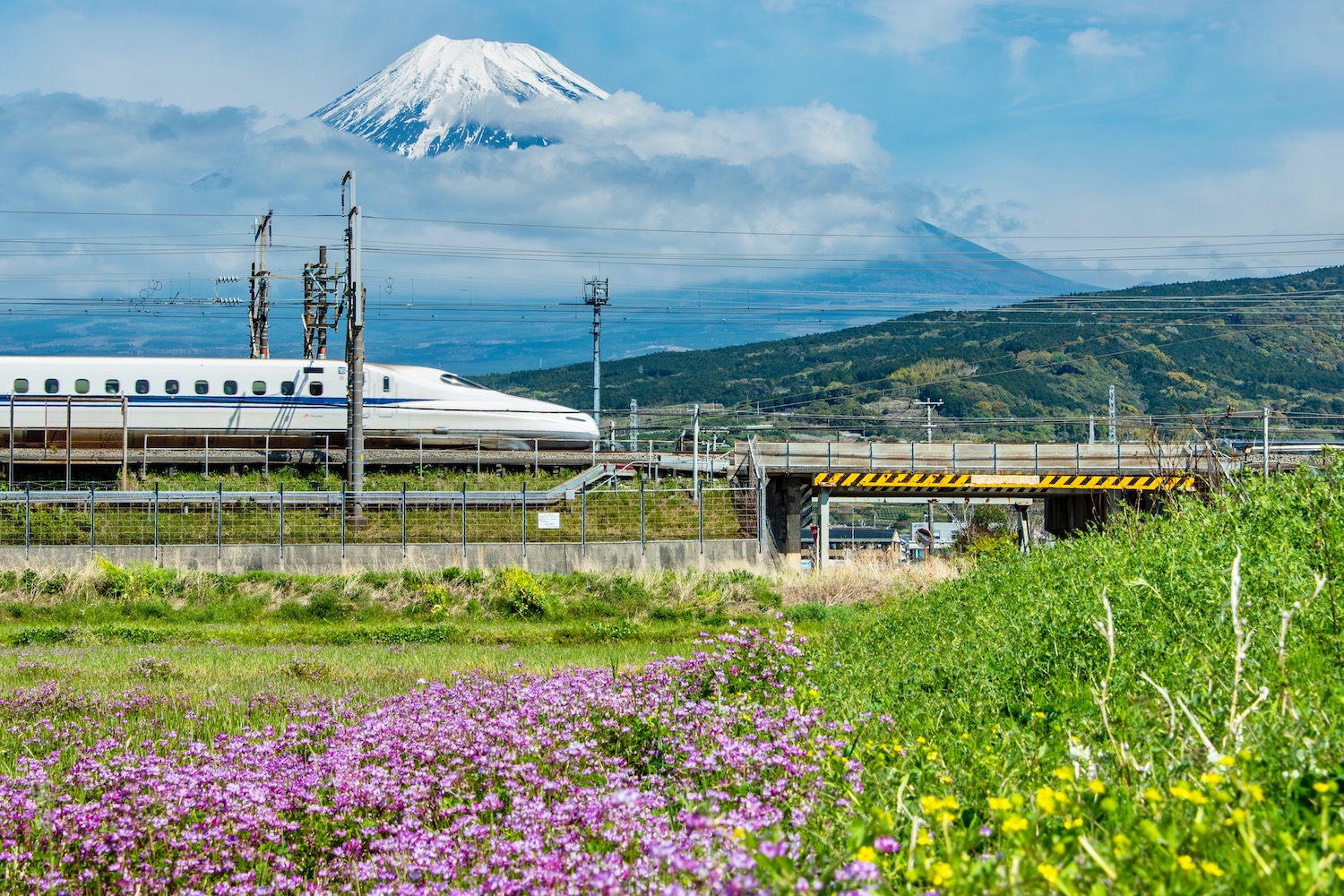You don’t have to be a train nerd to appreciate how amazing Japan’s railway system is. From local trains that seemingly float above the futuristic Tokyo cityscape, to Shinkansen bullet trains that fly through the countryside, Japan has the most impressive rail network in the world. Period, end of story.
That’s not the end of this post, of course, because while the awesomeness of Japan’s trains is not in question, many particulars are. Namely, how to ride Japan’s rails to stitch together the perfect trip.
Even if you don’t everything about trains in Japan by the time you finish reading this, you’ll have more than enough information to be on your way. Continue reading to receive a comprehensive education in just a few minutes.
Is the Japan Rail Pass Still Worth It?
Up until recently, I would’ve said that almost every traveler should buy a JR Pass. Unfortunately, due to the October 2023 JR Pass price increase I referenced in the introduction to this post, that’s no longer the case. The previous JR Pass 7 days price was just ¥29,650, which was just ¥610 (~4 USD) more expensive than a round-trip bullet train journey between Tokyo and Shin-Osaka. However, the price is now ¥50,000.
On the other hand, the logistics of the JR Pass are more convenient than ever. No longer a passport-sized card you have to manually wave at a gate attendant, it’s a ticket-sized chit that permits you unlimited entry through every automated JR ticket kiosk in the country. Moreover, JR Pass holders can now access the super-fast Nozomi and Mizuho trains that were previously off-limits, albeit with a hefty ride-by-ride supplement.

Japan’s Most Common Train Types
Shinkansen bullet trains
Shinkansen (新幹線, or “new trunk line”) are long-distance bullet trains that connect major Japanese cities in a surprisingly short amount of time. Popular routes include the Tokaido-Sanyo Shinkansen, which connects tourist hot spots like Tokyo, Kyoto, Osaka and Hiroshima, and the Tohoku Shinkansen, which heads northward from Tokyo, all the way to southern Hokkaido island.
Limited Express trains
The next step “down” from a Japanese bullet train is the Limited Express train, known in Japanese as tokkyu (特急). Although these trains aren’t quite as fast as Shinkansen, they allow you to sit in comfort with a reserved seat. Moreover, they tend to connect routes that are not economical for the Shinkansen, such as between Okayama (a Shinkansen hub) and the cities of Izumo and Matsue in the off-the-beaten-path San’in region.
Local trains
Local trains (普通電車 or futsu-densha in Japanese) sound boring, but they really run the gamut. While some are slow and stop at every station, others are Rapid (快速/kaisoku) or Special Rapid (新快速/shin-kaisoku) and are practically as fast as a Limited Express, albeit without the perk of assigned seats. Local trains generally stay within adjacent prefectures, such as between Osaka-Kyoto-Shiga in Western Japan, or between Tokyo and its satellites.
Subways
Some people don’t consider Japan’s urban underground networks to be “proper” train travel in Japan, but I disagree. What’s fascinating is that the Tokyo Metro and Toei Subway are only the beginning. You can find subways in all corners of Japan, from Sapporo, to Fukuoka, to Kyoto, and even in lesser-visited cities (for foreign tourists) like Sendai and Nagoya.
Other urban railways
To me, this is the ultimate rabbit hole of Japanese trains. From novelty railways like the “suspended” monorail in Chiba near Tokyo, to old school streetcars in Shikoku and Kyushu islands, to more functional railways like normal monorails in Tokyo, Osaka and Okinawa’s main island, Japan is a treasure trove for train nerds. This is to say nothing of rural sightseeing trains, which I’ll be honest is a topic for another post.

Can You Travel Anywhere in Japan by Train?
Renting a car in Japan is a controversial topic. Many people are purists. What I mean is that when they come to Japan, they are determined only to travel by train (and other public transportation). Others are simply intimidated by driving “on the other side”; even those from left-driving countries often assume that street signs and driving customs will be an issue (they’re not).
While I can’t fully litigate this question within the span of a Japan train guide, what I will say is that you can visit most places in Japan—and certainly, most places you’d visit as a newbie traveler—via public transport. Where things get difficult is when you truly go off the beaten path, be that in rural areas far from civilization, or in small cities and towns that time has forgotten.

Other FAQ About Train Travel in Japan
Is it expensive to travel by train in Japan?
Many trains in Japan are not expensive at all, such as subways in major cities, and short-to-medium distance commuter trains. Where train travel in Japan gets expensive is when you start using long-distance Limited Express trains and especially Shinkansen bullet trains, although I would argue it’s still a good value, given how efficient it is.
What is the best way to travel around Japan by train?
The best train to take in Japan really depends on the journey. For example, while Shinkansen bullet trains are great for covering long distances (such as from Tokyo to Hiroshima), they are sometimes less efficient than local trains on short trips, such as between Kyoto and Osaka. Having broad, deep knowledge of Japanese trains is essential if you want to use them most efficiently.
Can you take luggage on trains in Japan?
You can take most luggage on trains in Japan without a problem. However, if you have a large or oversized bag, you need to make an advance reservation to take in on the Shinkansen, and may have trouble finding space for it on a local train. In this case, it may be better to consider a luggage forward service.
The Bottom Line
Who said trains in Japan were complicated? Understanding them is really a matter of someone communicating what you need to know in a concise, useful way—this is what I have just done. For travelers with a lot of experience, Shinkansen bullet trains may seem complicated, while subways and other rail may be intuitive or even easy to use. On the other hand, if it’s your first trip to Japan or even Asia, you may need a crash course in all manner of Japanese trains. An even better way to tee up your train travel in Japan? Commission a custom Japan itinerary, or at least book a transportation consultation.






